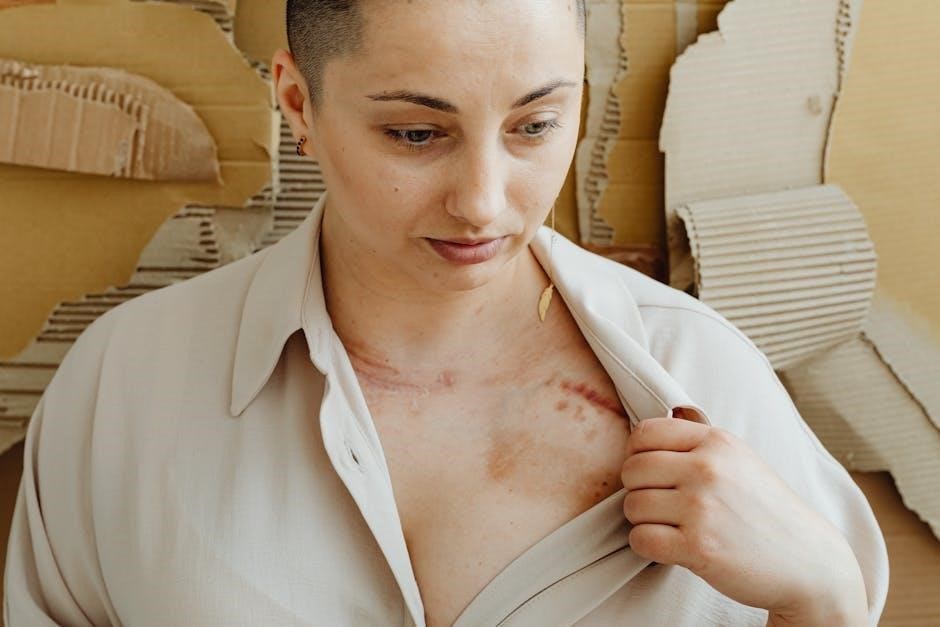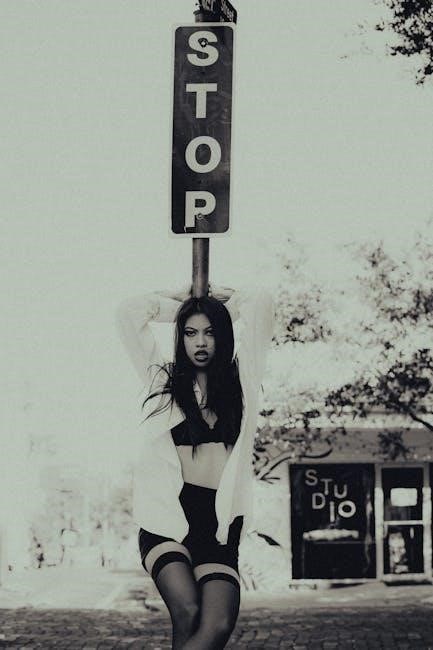Understanding Internalized Homophobia
Internalized homophobia refers to the psychological process where individuals internalize negative societal attitudes toward homosexuality, leading to self-hatred and shame. This phenomenon develops when individuals are repeatedly exposed to homophobic messages, causing them to subconsciously accept these beliefs as true. As a result, they may struggle with self-acceptance, experience emotional distress, and develop harmful self-perceptions. Understanding this concept is crucial for addressing its profound impact on mental health and well-being.
Definition and Explanation
Internalized homophobia is a psychological phenomenon where individuals unconsciously adopt and internalize society’s negative attitudes toward homosexuality. This occurs when gay, lesbian, or bisexual individuals are repeatedly exposed to homophobic messages, leading them to view themselves negatively. As a result, they may feel shame, self-loathing, or worthlessness, often believing they are “less than” heterosexual individuals. This internalization can stem from family, religious, or cultural environments that condemn same-sex attraction, making it difficult for individuals to accept their true selves. Over time, these ingrained beliefs can manifest as self-hatred, low self-esteem, or even denial of one’s identity. Understanding this concept is essential for addressing the emotional and psychological harm it causes, as it often lies at the root of many challenges faced by LGBTQ+ individuals.
The Impact of Societal Norms and Upbringing
Societal norms and upbringing significantly contribute to internalized homophobia by perpetuating heteronormative values and homophobic attitudes. From a young age, individuals are exposed to environments where heterosexuality is upheld as the norm, marginalizing other sexual orientations. Family dynamics, religious teachings, and cultural traditions often reject LGBTQ+ identities, explicitly or implicitly. The lack of positive representation and prevalence of homophobic messages in media and education reinforce these negative perceptions. This leads individuals to internalize such beliefs, resulting in feelings of shame, self-doubt, and self-hatred. Manifestations include denying one’s true identity or struggling with low self-esteem. Understanding the role of societal norms and upbringing is crucial in addressing and overcoming internalized homophobia effectively.

Recognizing the Signs of Internalized Homophobia
Signs include self-hatred, shame, and denial of one’s true identity. Individuals may experience guilt, self-doubt, or fear of rejection, often leading to emotional distress and low self-esteem.
Self-Hatred and Shame
Self-hatred and shame are core manifestations of internalized homophobia, often rooted in societal rejection and negative messaging. Individuals may experience intense feelings of worthlessness, believing their sexuality is flawed or immoral. This internal conflict can lead to self-loathing, as they unconsciously adopt homophobic attitudes toward themselves. Shame often accompanies these feelings, causing emotional pain and a deep sense of inadequacy. These emotions can interfere with personal growth, relationships, and overall well-being. Recognizing these patterns is the first step toward healing and self-acceptance. Understanding the origins of these feelings, often linked to upbringing and societal norms, is crucial for addressing and overcoming them. By acknowledging and challenging these internalized beliefs, individuals can begin to reclaim their self-worth and embrace their true identity.
Denial and Concealment of True Identity

Denial and concealment of one’s true identity are common coping mechanisms for individuals struggling with internalized homophobia. Many feel compelled to hide their sexual orientation or gender identity to avoid rejection, discrimination, or societal judgment. This denial often stems from internalized beliefs that being LGBTQ+ is unacceptable or immoral. As a result, individuals may avoid expressing their authentic selves, even to close friends and family, leading to feelings of alienation and isolation. Concealment can manifest in various ways, such as “straight-passing” behavior or avoiding LGBTQ+ communities altogether. This denial prevents individuals from fully embracing their identity and forming meaningful connections. Over time, the burden of hiding can exacerbate emotional distress, reinforcing feelings of shame and self-doubt. Recognizing and addressing these patterns is essential for breaking free from internalized homophobia and embracing authenticity.

The Emotional and Mental Health Effects
Internalized homophobia often leads to profound emotional and mental health challenges, including anxiety, depression, and low self-esteem. These struggles stem from self-hatred and societal rejection.
Anxiety, Depression, and Low Self-Esteem
Internalized homophobia frequently manifests as anxiety, depression, and low self-esteem, deeply impacting mental health. Individuals may experience persistent self-doubt, fear of rejection, and social withdrawal due to internalized shame. Anxiety often arises from the constant need to hide one’s true identity, while depression can develop from prolonged self-hatred and feelings of inadequacy. Low self-esteem is reinforced by negative self-perceptions, making it difficult to form healthy relationships or embrace one’s identity. These emotional struggles are exacerbated by societal stigma and the internalization of homophobic messages, creating a cycle of psychological distress. Addressing these effects requires self-compassion, acceptance, and external support to combat the harmful beliefs embedded by internalized homophobia.

Strained Relationships and Social Isolation
Internalized homophobia often leads to strained relationships and social isolation, as individuals struggle to reconcile their true selves with societal expectations. Fear of rejection and judgment can cause people to withdraw from intimate connections or hide their identity, creating emotional distance. This isolation may extend to both heterosexual and LGBTQ+ communities, as individuals feel disconnected from those who do not understand their internal conflict. The constant need to conceal one’s true identity can lead to loneliness and a sense of not belonging. Over time, this emotional detachment can exacerbate feelings of alienation and lower self-worth. Addressing these challenges requires building trust, seeking supportive relationships, and fostering self-acceptance to bridge the gap between internalized shame and external connection.
Practical Steps to Overcome Internalized Homophobia
Overcoming internalized homophobia begins with self-education, self-reflection, and challenging harmful beliefs. Seeking therapy, joining supportive communities, and practicing self-compassion are essential steps toward healing and self-acceptance.
Seeking Support from LGBTQ+ Communities
Connecting with LGBTQ+ communities is a powerful step in overcoming internalized homophobia. These communities provide a safe space to share experiences, fostering understanding and validation. Engaging with others who have faced similar challenges can reduce feelings of isolation and shame. Support groups, both online and in-person, offer opportunities to build connections and gain perspective. Surrounding oneself with positive, affirming influences helps counteract harmful societal messages. Additionally, community support empowers individuals to embrace their identities and develop resilience against internalized homophobia. By participating in shared activities and discussions, individuals can gain tools to challenge negative beliefs and cultivate self-acceptance. The collective strength of LGBTQ+ communities serves as a reminder that healing and growth are possible through connection and support.
Engaging in Therapy and Counseling
Therapy and counseling are essential tools for addressing internalized homophobia. Cognitive-behavioral therapy (CBT) helps individuals identify and challenge negative thought patterns, while psychodynamic therapy explores how past experiences contribute to self-hatred. Supportive therapy provides a non-judgmental space to process emotions and develop self-compassion. Working with a therapist trained in LGBTQ+ affirmative therapy can be particularly beneficial, as they understand the unique challenges of internalized homophobia. Counseling also offers a safe environment for self-exploration and healing, allowing individuals to reframe harmful beliefs and build a positive sense of self. Group therapy can further provide community support, reducing feelings of isolation and fostering connection with others who share similar experiences. Through therapy, individuals can gradually overcome shame and develop a more loving and accepting relationship with themselves.
Overcoming internalized homophobia is a profound journey of self-discovery and healing. It requires confronting deeply ingrained beliefs and embracing one’s true identity with compassion and acceptance. By understanding the societal roots of this issue and seeking support through therapy, counseling, and community, individuals can gradually dismantle shame and build a more authentic, loving relationship with themselves. The process is not linear, but with patience and resilience, it is possible to move from self-hatred to self-acceptance. Remember, healing is a collective effort, and leaning on others who understand the struggle can provide invaluable strength. Embracing your true self is a courageous act, and it is the first step toward a life free from the burdens of internalized homophobia.